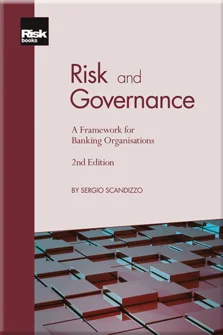A Cartography of Banking Risks
A Cartography of Banking Risks
Introduction: The Confluence of Risk and Governance
Corporate Governance, Information and Control
The Nature of Corporate Governance in Banking
Regulation and Governance
The Centrality of Risk Management
The Mission, Organisation and Governance of Risk Management
A Cartography of Banking Risks
Operations Risk in Extreme Market Conditions
Managing Legal Risk
Managing Reputation Risk
Drawing Boards: Motivations and Responsibilities in the Boardroom
Executive Compensation: Performance, Regulation and Ethics
Fair Value, Auditing and Internal Controls
Risk Management and the Role of Culture
The Board of Directors
Compensation
Auditing, Reporting and Disclosure
In the previous chapter, we argued that it was important to revisit the purpose of the risk management function. In this chapter and the subsequent three, we will discuss some issues that are not usually, or only marginally, treated in risk management reports but which are nonetheless key to a risk management function focused on preventing distress rather than on improving performance. We will start with a look at the nature of banking risks and how they can be mapped through a “cartography of risks”, a process whereby all the risks faced by a bank are identified and mapped to the relevant processes and activities. We will then discuss a different approach to the assessment and reporting of such risks.
THE NATURE OF BANKING RISKS
In what is arguably one of the most important books of the 17th century, La Logique ou l’Art de Penser, we find the following statement: “Fear of harm ought to be proportional not merely to the gravity of the harm, but also to the probability of the event”. The seemingly incontrovertible logic of this thesis lies at the heart of all modern approaches to risk management: from the naïve and hyper-prescriptive COSO11 Committee of Sponsoring Organizations
Copyright Infopro Digital Limited. All rights reserved.
As outlined in our terms and conditions, https://www.infopro-digital.com/terms-and-conditions/subscriptions/ (point 2.4), printing is limited to a single copy.
If you would like to purchase additional rights please email info@risk.net
Copyright Infopro Digital Limited. All rights reserved.
You may share this content using our article tools. As outlined in our terms and conditions, https://www.infopro-digital.com/terms-and-conditions/subscriptions/ (clause 2.4), an Authorised User may only make one copy of the materials for their own personal use. You must also comply with the restrictions in clause 2.5.
If you would like to purchase additional rights please email info@risk.net











